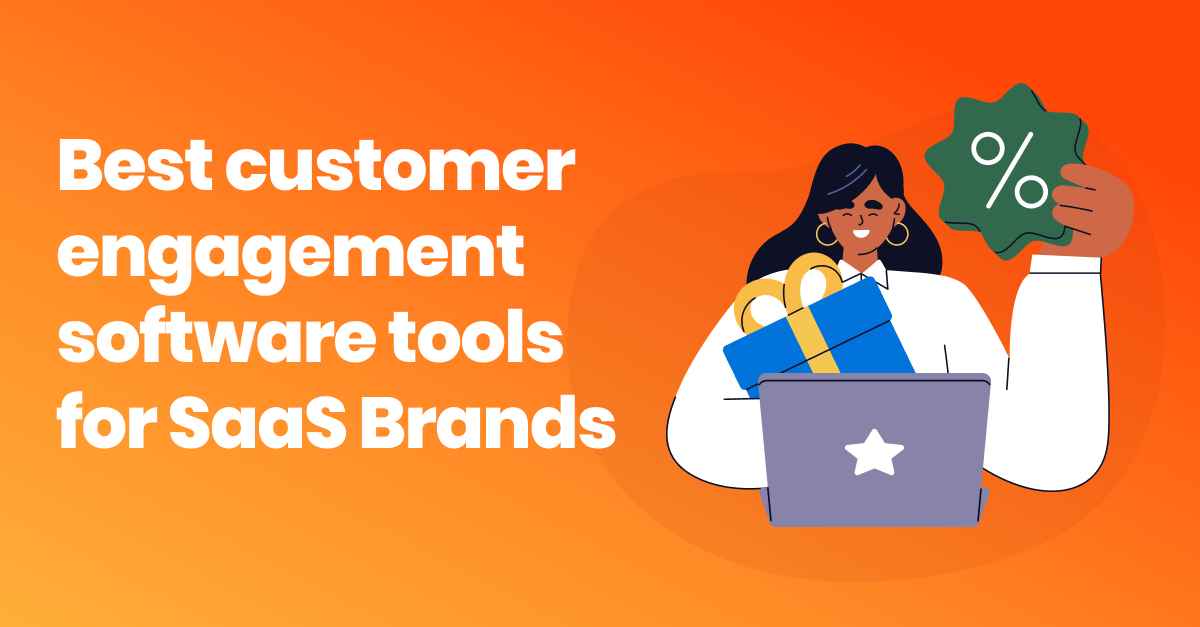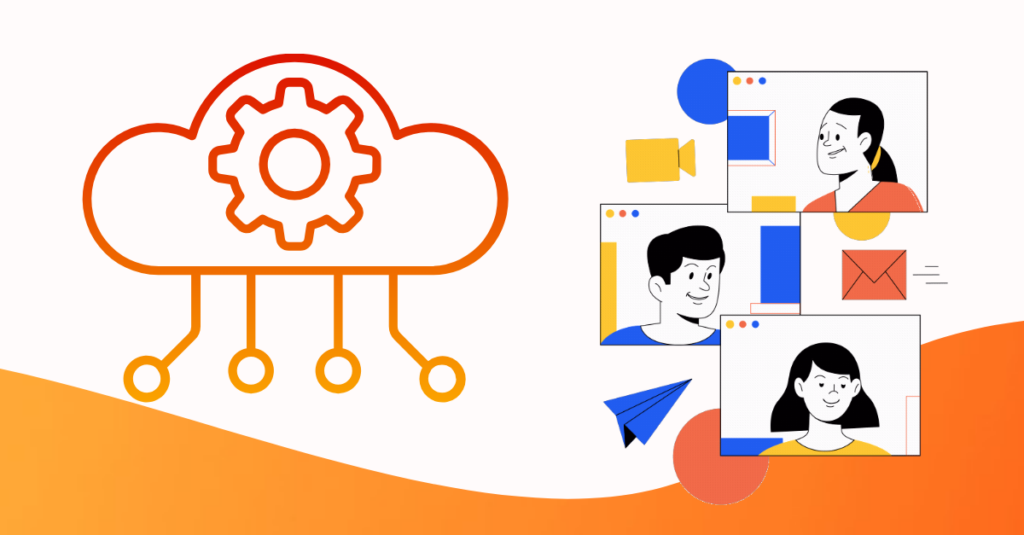
“We need more customers” “Get us more leads” sound familiar? Many businesses focus solely on customer acquisition but fail to realize that acquiring new customers is five times more expensive than retaining existing ones.
If you want to ensure a steady stream of revenue and profits, you need to create a strong user retention strategy where you build meaningful relationships with your customers.
In this article, we’ll explore the importance of new user retention and five customer retention strategies you can implement for your brand.
Customer retention is a crucial measure of a company’s success. It’s a tangible metric that conveys your ability to maintain customer satisfaction and consistently increase new user acquisition. According to a report by Customer Success Collective, a 5% increase in customer retention can increase company revenue by 25-95%.
Running customer retention initiatives allows you to build meaningful relationships with your customers while increasing your recurring revenue rate. Since your existing customers already trust your product, convincing them to stay on is often easier and cheaper than convincing a new customer. In fact, 86% of people say they’d be more likely to stay loyal to a business if they simply invest in onboarding content that welcomes and educates them after they’ve bought.
Your loyal customers then become enthusiastic brand advocates, spreading positive word-of-mouth recommendations and driving organic growth for your business.
👀If you want to know what makes users drop off, check out our article: 5 Reasons Users Churn And How to Prevent It From Happening.
Here are five reliable strategies to keep your users engaged and satisfied.
When you visit Starbucks and order a coffee, you like it when they put your name on the cup, don’t you? That’s because everyone loves personalization—whether it’s with their frappuccino or their onboarding process! Companies can generate as much as 40% more revenue from personalizing the customer experience.
By adapting the onboarding process to each user’s specific needs and preferences, you can provide a holistic user experience and increase their engagement with your product. Ultimately, this will increase user satisfaction and reduce churn because your users feel valued and supported from the beginning.
Here are some tips that can help you personalize user onboarding:

Lily Bradic, Marketing Lead at Outverse, shares her perspective on the importance of user retention strategies for SMEs.
“One successful strategy we’ve implemented at Outverse to improve user retention rates is personalized onboarding journeys. We tailor onboarding experiences to each user’s specific needs and preferences by utilizing data-driven insights from our AI-powered support assistant. This has increased user engagement and satisfaction, leading to higher retention rates.
The results of implementing personalized onboarding journeys have been remarkable. Within the first three months of adopting this strategy, we’ve seen a significant reduction in customer churn by 15%. Additionally, our customer satisfaction scores have improved by 20%, indicating that users are not only staying but also deriving more value from our platform.
In measuring user retention, we track several key metrics, including churn rate, customer lifetime value (CLV), and user engagement metrics, such as active users and feature adoption rates. By continuously monitoring these indicators, we gain insights into user behavior and can iterate on our strategies to improve retention rates over time.”
Fruity tip: Check out our custom event feature to create highly targeted user onboarding flows for each customer.
Customers no longer just buy the product, they also buy the experience. Over 88% of customers say good customer service makes them more likely to purchase again. Excellent customer service can be the deciding factor for customers to stick with your product, as it has a huge effect on the overall customer experience.
For SaaS companies, customer support often comes in the form of Help Center Widgets. These helpful features offer 24/7 support with a few clicks. They remove any barriers to adoption, help troubleshoot problems, and answer common questions within the platform itself.
Usually, help centers come equipped with common FAQs, feedback widgets, access to a knowledge base, and third-party chat integrations.
👀 The 5 Best SaaS Help Widgets for Your Platform
It’s good practice to combine your help widget with your knowledge base. This allows users to troubleshoot problems in their preferred medium, like articles, videos, screenshots, or tutorials.
💡Discover how implementing the strategies outlined in 6 ways to reduce support tickets during onboarding can transform your customer support approach
Engaging with customers who have stopped using your product or service is an excellent way to understand the root causes of churn and prevent it in the future.
Businesses can gain valuable insights into areas for improvement in their products or services, address underlying issues, refine their offerings, and implement strategies that enhance customer retention and satisfaction in the long run.
Suppose you want to gauge how customers feel about your product. In that case, you should measure user sentiment throughout the customer lifecycle and collect qualitative feedback to understand the reasons behind the scores. Once you have this data, you can act on it to improve your customer retention strategy.
When you identify and address the root causes of churn, you can implement strategies to prevent it in the future. For example, optimize certain onboarding flows to avoid confusion, train CSM teams, and provide feedback for future product development.
Here’s what Anastasiia Kinichenk, Product Marketing Lead at SE Ranking, has to say on effectively reaching out to churned customers and leveraging their feedback to refine retention strategies.
“As a starting point, I recommend understanding the main reasons for your product’s churn. You can do this by adding a questionnaire before or after subscription cancellations. Alternatively, you can try sending such a poll via email.
Once you have answers, you should divide them into addressable and non-addressable reasons. I recommend excluding reasons you are not working with, such as market conditions or business changes. It’s better to focus on product-oriented issues.
After conducting such research, our main insight was understanding that the best way to deal with churn is to prevent it and work on user adoption and onboarding. We added additional video tutorials on how to use our platform, launched private onboarding sessions for high-value customers, and updated our help using users’ requests. Such activities helped us increase the adoption rate by 8% and decrease churn by 12%.”
👀If you’re wondering about the right questions to ask in a survey, check out our article 48+ Good Survey Questions That Get Replies and Helpful Insights
Implement a customer loyalty program to create an emotional connection between you and your customers.
A good customer loyalty program should create a sense of belonging, value, and appreciation for your customers. It should also offer valuable rewards to encourage users to engage more with your brand. For instance, Dropbox drives word-of-mouth referrals and provides more space to users in return.
Source: Dropbox
Evernote has a points-based rewards system. Users earn points for various interactions, such as completing tasks or referring friends. These points can then be redeemed for premium features or discounts, incentivizing continued engagement and retention on the app.
Source: Evernote
Remember the feeling you get when you’re playing a video game and finally get past a difficult level? Gamification creates positive emotions and gives users a surge of dopamine as they engage in challenges to achieve their goals.
It generates a sense of urgency and excitement and encourages users to repeat actions that make them feel that way.
Incorporating gamification into the onboarding process means adding game-like elements such as checklists, hints, progress bars, and achievement badges to make the experience more enjoyable and engaging for users.
By turning mundane tasks into interactive challenges and providing prompt feedback and rewards for completing them, gamification enhances user engagement and facilitates learning while driving feature adoption.
You can use different gamification techniques such as adding fun animations, celebratory modals, badges, leaderboards, and progress bars. Check out how Freshdesk uses gamification by adding a leaderboard to their product. Wouldn’t it be fun to be known as a “sharpshooter” amongst your colleagues?
Source: Freshdesk
Fruity Inspiration: Check out how IU University improved user onboarding for students by using an onboarding checklist in their product.
If you only focus on bringing in customers but fail to make them stay, your business will soon be at a loss. Avoid this nightmare by equally prioritizing customer retention across the organization and choosing the right product onboarding tool to get the job done.
But is there a tool that’s easy to use for everyone and checks all the boxes mentioned in this blog? Spoiler alert: it’s Product Fruits!
At Product Fruits, we understand the significance of building the perfect customer onboarding process for your customers, and we offer a unique suite of features designed to help businesses build a solid user retention strategy.
From customizable onboarding flows to interactive training resources and proactive support tools, Product Fruits empowers businesses to create exceptional user experiences that foster long-term customer relationships and drive growth.
With Product Fruits, businesses can unlock the full potential of their SaaS products and maximize customer retention. Book a demo today to find out how to turn your prospects into customers with a killer user onboarding flow!